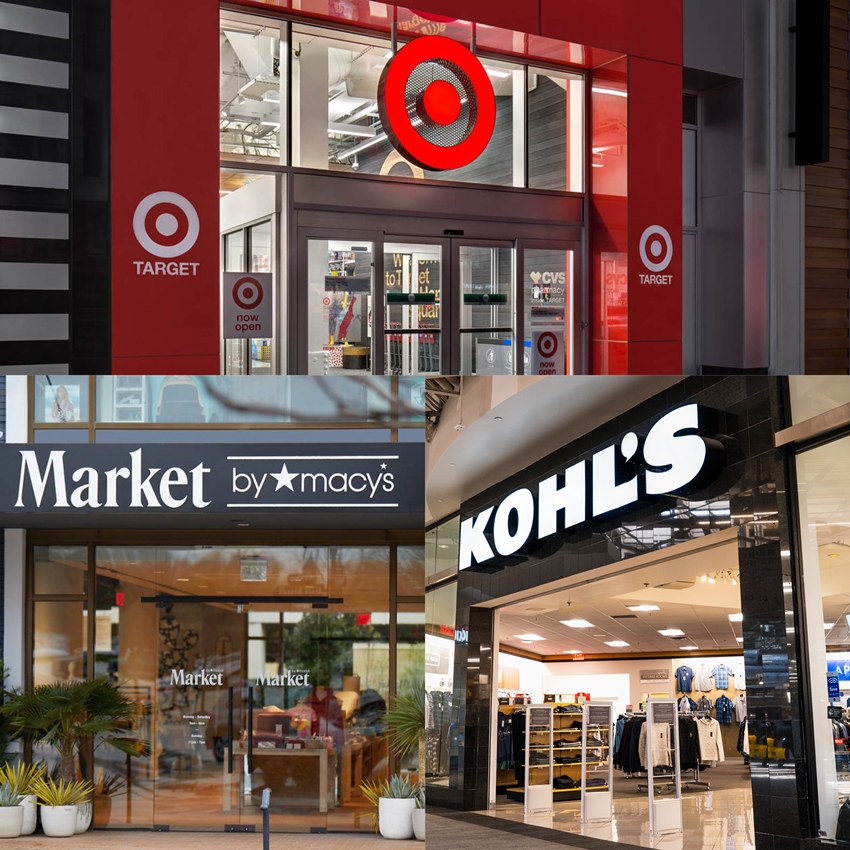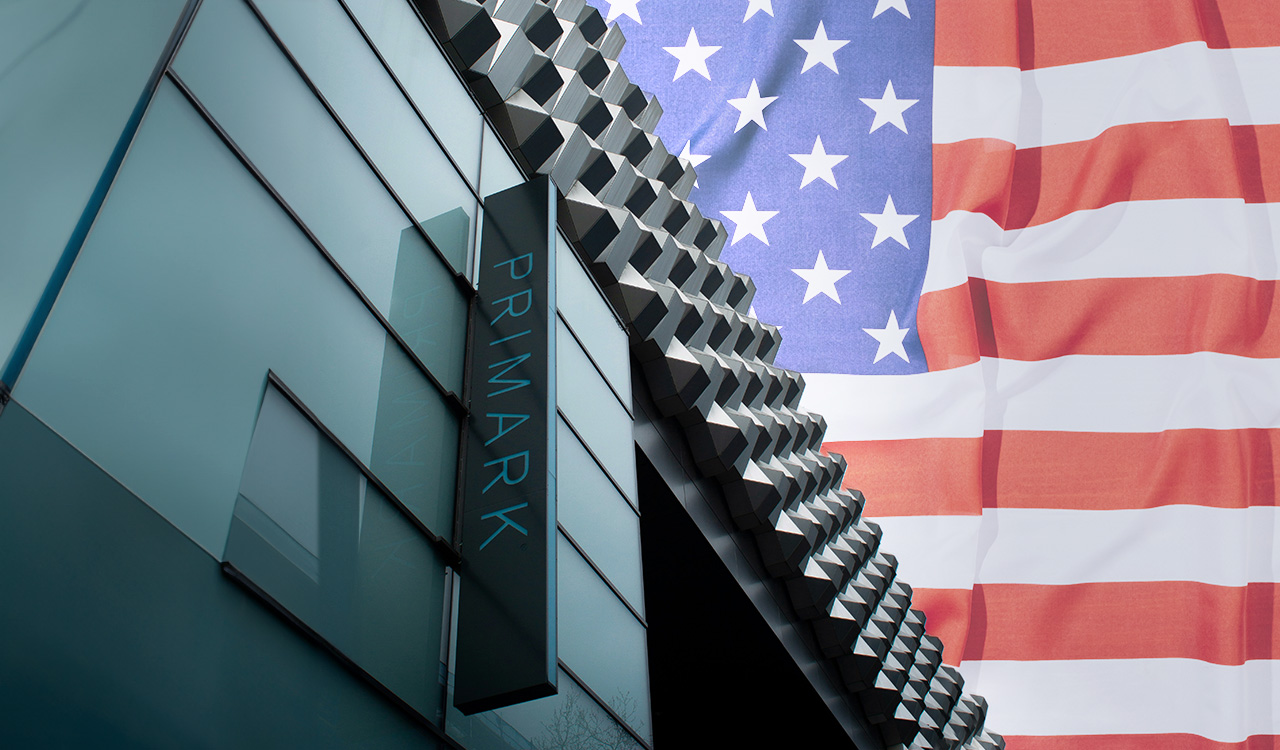Spoiler alert: This is a strategic perspective, not a financial review – on purpose.
The current three-front perfect storm for Macy’s and Kohl’s could arguably be described as a pursuit of a post-Covid higher level of positive “normal,” managing through inflation and supply chain impediments, and the threat of greedy activists. And the major stories coming out of their recent investor presentations were their focused repositioning strategies, aligning merchandising and distribution with young consumers’ preferred products, and enhancing shopping experiences.
Target
Target has proven my often predicted “localization” and “personalization” strategy as critical for success among legacy retailers who are in the process of transforming. As an essential retailer during the pandemic, Target gained time and a capital advantage, which they brilliantly put to use by investing heavily in perfecting their omnichannel model, ramping up on their youth-focused national and private brand initiatives (including the launch of Ulta Beauty’s in-store shops), and most importantly, rapidly expanding their local, neighborhood small-store strategy. As of 2019 (no recent updates available), there were over 100 small stores (an average of 40,000-square-feet), about 23 on college campuses, and their strategy is to add 30 to 40 a year. According to Cornell, “We’re opening up Target stores near America’s most iconic tourist destinations: Times Square, Disney World and the Las Vegas Strip. Because we learned from our store at Herald Square, there are few places that help travelers feel more at home than Target.”
Macy’s
At the recent UBS Global Consumer and Retail conference, Macy Inc.’s EVP and CFO, Adrian Mitchell said their off-mall specialty brick-and-mortar strategy of smaller, local stores will contribute “a material level of volume over time. The data seems to show that those off-mall locations that are very convenient to where customers live, shop and work are actually quite relevant and an important part of how we think about our strategy. We very much believe that Market by Macy’s, serving our Macy’s brand, and our Bloomie’s small-store format serving our Bloomingdale’s brand, are critical to the growth of our stores’ channels, and critical to the growth of our omnichannel business.”
Michelle Gass said, “We are evolving our position from a department store to a more focused lifestyle concept, centered around the active and casual lifestyle. This is unique and we can own this space. Make no mistake, this is a transformation, it is a complete reinvention of our business model and our brand.”
Mitchell continued, Market by Macy’s is seeing “sales beyond our expectations … so getting that location right is really important, and we’re seeing those convenient high-traffic locations really produce. It’s a fundamentally different experience but a relevant experience. I’m really excited that the number of new customers shopping these stores is materially higher than mall-based stores.”
Check those boxes on localization and personalization! Mitchell pointed out that doing business at a very local level has customer experience scores meaningfully higher than Macy’s mall-based stores and provides easier navigation, quick and easy checkouts, and more sales associates to assist and interact with customers.
Bloomingdale’s small-store Bloomie’s strategy was launched in Alexandria, VA, offering contemporary and luxury brands, services, tech-enabled stylists, new store design concepts and a restaurant. While the rollout strategy was not outlined by Mitchell, I have to assume that if the Alexandria location is successful, a similar expansion strategy will be put in place.
While Macy’s stated in 2019 that they would close 125 stores between 2020 and 2022, only about half have been closed. Jeff Gennette, Chairman and CEO of Macy’s said, “We have delayed most of the remaining closures we earmarked in 2019 in order to maintain a physical presence in many markets while we scale up our off-mall format stores. In addition to being a place for discovery and shopping, our stores are now also fulfillment hubs supporting our digital operations through buy-online, pick-up in store, curbside pick-up and same-day delivery. Keeping these cash-positive stores open also helps to fund the investments we are making to reposition our fleet over the next several years.”
Macy’s and Bloomingdale’s are also developing online marketplaces which will greatly expand the number of products, brands, categories and all in greater depth. Mitchell said, “Digital sales per capital in markets where we have stores, even mall-based stores are three times more productive than markets that don’t have it. So, the notion of winning in omnichannel is also recognizing the critical importance of stores.” And in another nod to their off-mall strategy, he said, “We feel that we have to place our stores in more convenient locations. I will say very clearly that repositioning and optimizing the physical footprint is a must-win initiative for Macy’s to be relevant over the next 10 years.”
Kohl’s
Just as Kohl’s pioneered an off-mall, small-store distribution strategy opening stores in neighborhoods and shopping centers during the 90s, capturing young working moms who did not have the time to drive to and shop through the malls, they are once again envisioning a new fleet of smaller neighborhood stores (35,000 vs. their current 80,000-square-feet stores). They plan to roll out 100 over the next four years, following the launch of its first prototype in Seattle this fall. CEO Michelle Gass told WWD the small stores have “a level of flexibility and hyper localization.” For example, in Seattle there would be an intensified assortment of outerwear that’s localized and tailored to the local climate and customer base. Kohl’s has invested in a new platform to use data science for more granular merchandising decisions on a local store level. As a part of Kohl’s repositioning, they are also investing in modernizing and refreshing the store layout to elevate the shopping experience.
About Sephora’s beauty shops, currently in 200 Kohl’s doors, Gass said it’s “a game changer,” generating $2.2 to $2.4 million in sales per Kohl’s store. Executives also said that 25 percent of those shopping Sephora are new Kohl’s, and many decide to shop other categories while in the store. Kohl’s plans another 400 Sephora shops by the end of 2022 and 850 by the end of 2023, projected to generate $2 billion in sales.
Gass said the Amazon shops (now in all of Kohl’s roughly 1200 stores) generate “millions of new customers” who are primarily returning Amazon purchased goods (an estimated 2 million returns in 2020) however, while in store, many are shopping and purchasing other goods.
And to change Kohl’s culture mindset, Kohl’s is eschewing the department store moniker. Gass said, “We are evolving our position from a department store to a more focused lifestyle concept, centered around the active and casual lifestyle. This is unique and we can own this space. Make no mistake, this is a transformation, it is a complete reinvention of our business model and our brand.”
Don’t Follow the Numbers
I’m exaggerating about ignoring the numbers to make a point. There are a multitude of sources that have covered the numbers and speculation of what they mean, and as I said, this article is about the strategy. There is also a media obsession about the activists who foolishly create a narrative of how they can “unlock value” in the short term … AKA making a lot of money fast.
I say pay attention to the strategy. Because if the strategy and its execution are right, the money will follow. Just look at Target. Macy’s and Kohl’s, with similar strategies, are slightly behind Target in their execution, some of the lag due to their nonessential classification during the pandemic.
I say give them a break. However, I must emphasize that “execution” is the operative word. I once lauded Ron Johnson for his transformative vision for JC Penney (which I still do). However, his extremely poor execution crippled the brand, which to this day is still struggling to stabilize out of bankruptcy.
A former CEO, Allen Questrom, took the helm of a limping JC Penney in the early 2000s and famously and figuratively told Wall Street “don’t follow the numbers.” Between the lines, he told the financial world and shareholders not to expect a profit for about five years. He went on to successfully execute a strategy that did right JCP’s sinking ship.
Likewise, I witnessed CEO Brian Cornell telling analysts that he was committing to a capital investment of some $8 billion over about five years to essentially turn Target’s business around. And right there in real time, during the meeting, I watched their stock price on Yahoo drop like a rock as he advised that the bottom line was going to be squeezed. He not only turned it around, but he also recently was awarded the NRF Retailer of the Year.
To Macy’s and Kohl’s: Stay focused on the long-term, listen to your customers and fine-tune the strategy as needed, and execute, execute, execute. Any retailer can have a good idea, but pulling it off is what defines the greats.




